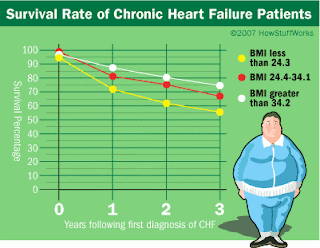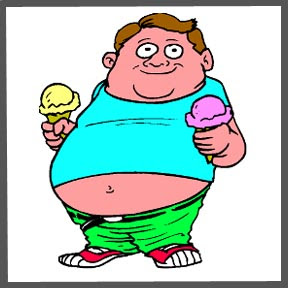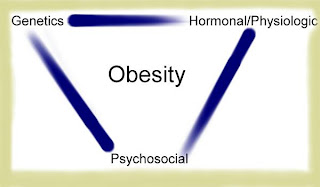
We have all known for a fact, and for some time now that obesity is one of the risk factors for developing heart disease and heart failure. We have also in the last few decades been very upbeat, to say the least, in encouraging weight loss.
Particularly, BMI or Body Mass Index has been used to show increasing risk for heart condition as it increases. BMI is a number that indicates the extent of body fat in an individual. A higher BMI has often, if not always, been associated with adverse outcome; until now.
Evidently, the excess body fat may cause heart failure, but it also helps one recover better. There are indications that the obese fare better after heart failure compared to their healthy counterparts. This is according to a study by Dr. Gregg C. Fonarow of the David Geffen School of Medicine at the University of California at Los Angeles U.S.A and colleagues. This study has been backed up by another led by Dr. Jeptha P. Curtis of Department of Medicine section of cardiovascular medicine, Yale University School of Medicine.
Both studies came to the counter-institute conclusion that higher BMI is well associated with lower mortality risk. Overweight and obese patients had lower risks of death in case of a heart failure compared to healthy and underweight individuals.
Fonarow tries to explain this unusual finding, "the study suggest that overweight and obese patents may have greater metabolic reserves to call upon during an accuse heart failure episode which may lessen in-hospital mortality risks"
The studies found that in-hospital mortality rate in patients that had heart failure reduced as their BMI increased. Mortality rate in the hospital was highest at 6.3 percent for underweight 4.6 percent for healthy weight, 3.4 percent for the overweight and only 2.4 percent for obese patients.
The studies seem to point to the existence of what has now come to be know as the "obesity paradox". Many researchers and doctors are stumped y the phenomena, but not everyone is buying into the paradox. A. Habbu and colleagues at the University of Texas School of Public health Huston think the obesity paradox may be a bunch of baloney. They comment on one of the studies, "closer examination of these studies raises important questions on the validity of the paradox". They have issue with the quality of data used in the studies implying they could be inherently skewed.
But whether the obesity paradox exists or not, these is not doubt you still need to lose excess weight. Remember although excess weight may help you recover from heart failure; it is the one that increased your chances of the heart failure in the first place. So having to make a choice between successful recovery from a heart failure and not having any heart failure, we suggest you choose the latter.




















